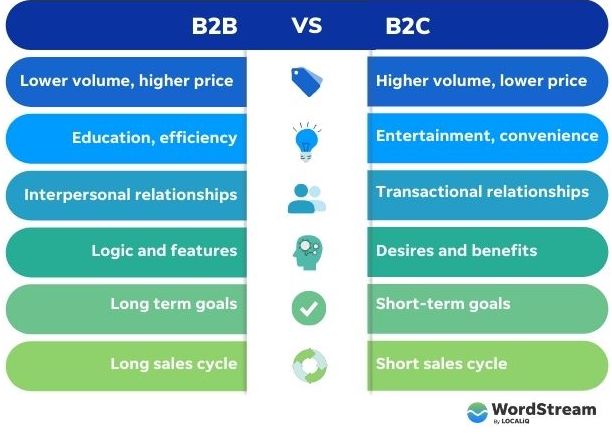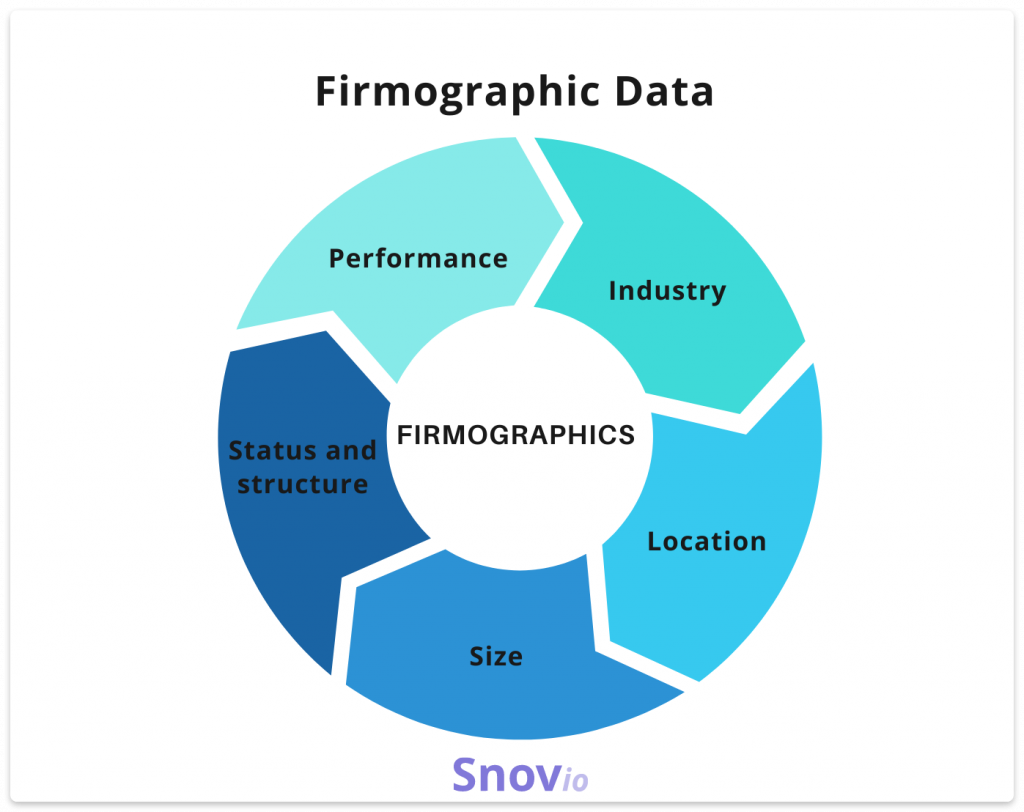Are you struggling to precisely target the right businesses in your B2B marketing efforts? The solution might be simpler than you think. Firmographic segmentation offers a powerful way to refine your targeting strategy by focusing on the unique characteristics of businesses—such as their size, industry, and revenue.
This approach not only enhances your marketing precision but also aligns your efforts more closely with sales, driving better results across the board. In this blog post, we’ll explore how firmographic segmentation can transform your B2B strategy. You’ll discover key data points to consider and practical steps for implementation.
- Refine Your Targeting with Firmographic Segmentation: Focus on key business characteristics like company size, industry, and revenue to enhance your B2B marketing precision and effectiveness.
- Utilise Firmographic Data for Better Alignment: Leverage firmographic data to align your marketing and sales efforts, ensuring that both teams target the most valuable prospects.
- Implement Practical Segmentation Strategies: Use CRM systems and data providers to collect and analyse firmographic data, enabling more tailored and impactful marketing campaigns.
- Stay Ahead with Emerging Trends: Keep an eye on future trends in firmographic segmentation, such as the integration of AI and machine learning, to stay competitive in the evolving B2B landscape.
What Is Firmographic Segmentation?
Firmographics encompass the unique characteristics that define an organisation, company, or business entity—whether it’s a corporation, a single-member LLC, a partnership, a PLC, or a non-profit. These attributes are vital in categorising companies into distinct segments based on criteria such as size, industry, and revenue. This process, known as firmographic segmentation, plays a crucial role in refining marketing and sales strategies, allowing businesses to engage more effectively with their target audiences and optimise their digital interactions.
What are the key benefits of implementing firmographic segmentation in B2B marketing?
The core aim of firmographic segmentation is to empower organisations to divide their B2B market into targeted groups, thereby enhancing the precision and effectiveness of their marketing strategies.
Optimised Resource Allocation
In today’s landscape, where every expenditure is scrutinised, implementing firmographic market segmentation ensures that your resources are allocated strategically. By integrating firmographic data into your B2B segmentation strategy, you can significantly improve your ability to reach and engage your target market. This approach not only maximises your budget but also conserves time by concentrating efforts on well-qualified leads. Although analysing firmographic data may initially require an investment of time, the long-term benefits—such as reduced wastage on unproductive leads and heightened marketing efficiency—are substantial.
Enhanced Customer Engagement
A precisely targeted firmographic segmentation strategy is indispensable for capturing the attention of your audience and boosting customer engagement. By leveraging detailed firmographic insights, your organisation can personalise initial interactions, aligning with the heightened expectations of today’s customers. In the current market, personalisation is not merely an advantage; it’s a necessity. Customers who experience a tailored approach from the outset are more likely to respond positively, make purchases, return for repeat business, and even refer others.
Increased ROI
The advantages of firmographic segmentation ultimately lead to a significant return on investment (ROI). By optimising resource allocation and employing a focused B2B segmentation strategy, your organisation can enhance sales and profitability. When your team is relieved from the burden of inefficient practices, they can concentrate on seizing opportunities. Additionally, retaining customers through effective engagement strategies boosts the potential to capitalise on existing relationships, enabling your organisation to extract maximum value from every market opportunity.
What Matters Most?
Creating a comprehensive firmographic profile that includes not only company size and industry but also values and culture is essential for fostering deeper engagement. Try developing narrative-driven content tailored to specific segment challenges as this can enhance relevance and connections. Typically, building a marketing strategy that directly addresses the values and needs of each firmographic segment leads to more meaningful interactions and stronger relationships.Get In Touch
How does B2B market segmentation differ from B2C segmentation?
How B2C Segmentation Operates
In the B2C (Business-to-Consumer) realm, marketers segment their leads and customers based on four primary factors:
- Behavioural Data: This involves analysing how a prospect or customer interacts with your brand, both directly and indirectly. It encompasses activities such as browsing products on your website, demonstrating brand loyalty, and engaging on social media platforms.
- Geographical Data: Targeting consumers by location allows brands to deliver tailored offers and promotions. This approach is particularly beneficial for smaller businesses with limited budgets, as it enables them to focus on leads that are more likely to convert.
- Psychographic Data: B2C marketers often group customers according to lifestyle, personality traits, social class, values, and similar factors. Crafting messages that resonate with these psychographic profiles helps connect with the audience on a deeper, more personal level.
- Demographic Data: Key demographic attributes include gender, age, religion, education, income, marital status, and occupation. By tailoring offers based on these characteristics, brands can create marketing campaigns that are more personalised and relevant.
Source: MarketingDonut
How B2B Segmentation Functions
In contrast, B2B (Business-to-Business) marketing segmentation focuses on distinct core areas that are critical for developing an effective B2B segmentation strategy:
- Profile Data: While B2C segmentation relies heavily on demographic data, B2B segmentation goes further by incorporating firmographic data, such as company size, revenue, industry, and the technology they utilise. Additionally, it considers business persona demographics, including job title, function, seniority, and skills. Firmographic segmentation is essential for creating a precise B2B segmentation strategy that targets the most appropriate companies.
- Intent Data: B2B marketers place emphasis on identifying companies that are actively seeking products or services within their category. This includes analysing company-level signals that indicate buying intent, such as content consumption patterns, search behaviours, and review activities. When a company shows increased interest in a specific topic, it often suggests an impending purchase decision.
- Engagement Data: Although similar to B2C behavioural data, B2B engagement data is tailored to actions specific to the B2B environment, such as lead form submissions, interactions at trade shows, sales meetings, and email engagement. It’s vital to track how these prospects engage with your brand across owned channels when segmenting them.
The approaches to segmentation in B2B and B2C are inherently different, each designed to meet the unique needs of their respective audiences. While B2C segmentation leans on individual consumer behaviours and preferences, B2B segmentation is anchored in firmographic data and business-focused metrics, ensuring that strategies are aligned with the objectives of business entities rather than individual consumers.

Key Firmographic Data Points
Firmographic data refers to the demographic information specific to a company or organisation. This data includes various characteristics such as industry, company size, location, revenue, and number of employees. It is instrumental in helping businesses better understand their target market, identify potential customers, and make informed decisions regarding their sales, marketing, and overall business strategies.
The Main Attributes of Firmographic Segmentation
Firmographic segmentation involves the process of examining and categorising B2B audiences based on shared characteristics. While there are numerous variables that can be utilised in firmographic segmentation, five key attributes are particularly significant:
Industry:
The industry attribute is fundamental to firmographic segmentation, as it categorises target audiences based on the type of product or service they offer. Industries are typically divided into four broad categories:
-
- Primary Industry: Agriculture, Mining, Fishing
- Secondary Industry: Manufacturing, Processing, Construction
- Tertiary Industry: Hotels, Real Estate, Restaurants
- Quaternary Industry: Health Care, Education

Understanding the specific industry in which your product or service provides value is crucial for effective segmentation. By targeting the appropriate industry, B2B marketers can refine their firmographic market segmentation efforts, ensuring their marketing strategies are aligned with industry-specific needs.
Source: Lotame
Location:
Location is a critical firmographic data point that focuses on the geographical aspects of the target audience, such as city, country, state, and environmental factors. A company’s location can significantly influence its purchasing behaviour and a brand’s ability to sell and distribute its products. B2B marketers can leverage this attribute to identify regions where their offerings are most likely to add value, thereby enhancing their B2B segmentation strategy.
Size:
The size of an organisation, typically defined by its annual revenue and number of employees, is another pivotal attribute in firmographic segmentation. Size can range from micro-scale and small-scale enterprises to medium-scale and large-scale organisations.
When evaluating the size attribute, it’s essential to determine whether your target market consists of Fortune 500 companies or small start-ups. Ensuring that your target audience has the capacity to afford your offerings is vital; failing to do so could result in financial losses. Additionally, the size of an organisation often indicates its purchasing power and the likelihood of repeat business, further informing your firmographic segmentation strategy.
Status and Structure:
The status and structure of an organisation refer to its legal standing and its relationships with other entities. This can include:
-
- Sole proprietorships
- Partnerships or limited partnerships
- Corporations
- Limited liability companies (LLCs)
- Non-profit organisations
Understanding an organisation’s structure, funding type, and hierarchy can help marketers identify which organisations would benefit most from their product or service, leading to more profitable marketing strategies.
Performance:
Performance is a firmographic segmentation attribute that evaluates an organisation’s achievements over time. This includes factors such as business execution, employment growth, financial performance, and revenue trends. By grouping target audiences based on their performance, businesses can better predict future behaviour and tailor their sales and marketing strategies accordingly.
Moreover, understanding the executive titles and sales cycle stages of your target organisations is crucial. Knowing whether you should be targeting the CEO, Managing Director, or CFO can prevent wasted efforts on the wrong decision-makers. Similarly, understanding where your prospective customers are in their sales cycle—whether in the awareness, consideration, or decision stage—will determine the type of information you should present to them.
Our Tactical Recommendations
Implementing analytics tools to track firmographic performance allows for continuous refinement of targeting strategies. Clients often discover that using segmented email campaigns based on firmographic data significantly improves engagement and conversion rates. Regularly gathering feedback from firmographic segments enables ongoing adjustments to messaging and strategies, ensuring alignment with evolving needs.Get In Touch
What challenges might arise when using firmographic segmentation for targeting?
1. Incomplete or Outdated Data
One of the key obstacles in firmographic segmentation is the challenge of acquiring firmographic data that is both accurate and up to date. This issue becomes particularly challenging when dealing with large datasets or relying on external data providers, where inconsistencies and inaccuracies are common. When firmographic data is incomplete or outdated, it can lead to inaccurate segmentation, resulting in poorly targeted marketing strategies and wasted resources. To address this, businesses should implement thorough data cleansing and enrichment practices. Consistently updating and verifying customer data is critical to ensuring the accuracy and reliability of your firmographic segmentation efforts.
2. Limited Range of Segmentation Variables
Another significant challenge in firmographic segmentation is the often narrow range of variables available for analysis. While key firmographic factors like industry, company size, and location provide valuable insights, they may not fully capture the complexity of customer behaviours and preferences. To overcome this limitation, businesses should consider enhancing their firmographic market segmentation by integrating it with other methods, such as psychographic or behavioural segmentation. By expanding the range of variables used, companies can gain deeper insights into their customer base, leading to a more sophisticated and effective B2B segmentation strategy.
3. Risk of Homogeneity Within Segments
A common issue in firmographic segmentation is the potential for segments to appear homogeneous, which can obscure significant differences between customers. For instance, two companies within the same industry and of similar size may have very different priorities when it comes to budget, technology adoption, or decision-making processes. Recognising and addressing these internal differences within segments is essential for effective targeting and personalisation.
4. Evolution of Firmographic Variables
Firmographic variables are not fixed; they can change as companies grow, shrink, relocate, or merge with other businesses. These changes can quickly make your initial firmographic segmentation outdated, leading to misaligned marketing efforts. To avoid this, businesses should regularly update their customer data and actively monitor changes in firmographic variables. Staying on top of these shifts allows you to adjust your segmentation strategy in a timely manner, ensuring it remains relevant and effective.
5. Identifying and Prioritising High-Value Accounts
Not all accounts are created equal, and determining which ones to prioritise based on firmographic data can be particularly challenging, especially when dealing with large datasets. This is especially important in account-based marketing (ABM), where the focus is on targeting accounts with the highest potential for conversion.
Solution: To enhance your ability to identify high-value accounts, leveraging predictive analytics and machine learning can be invaluable. These technologies can analyse extensive firmographic data to predict which accounts are most likely to convert, allowing you to prioritise your resources more effectively and increase your chances of success.
6. Scaling Personalisation Across Multiple Segments
While firmographic segmentation facilitates the creation of personalised campaigns tailored to specific segments, scaling this level of personalisation across multiple segments can be resource-intensive and complex.
Solution: Utilising AI-driven content creation and personalisation tools can streamline this process. For example, tools like Abmatic AI’s Visual Editor can generate and optimise personalised website content with efficiency. By automating personalisation, you can maintain a high level of customisation without overwhelming your resources, ensuring each segment receives content that resonates with its unique needs.







